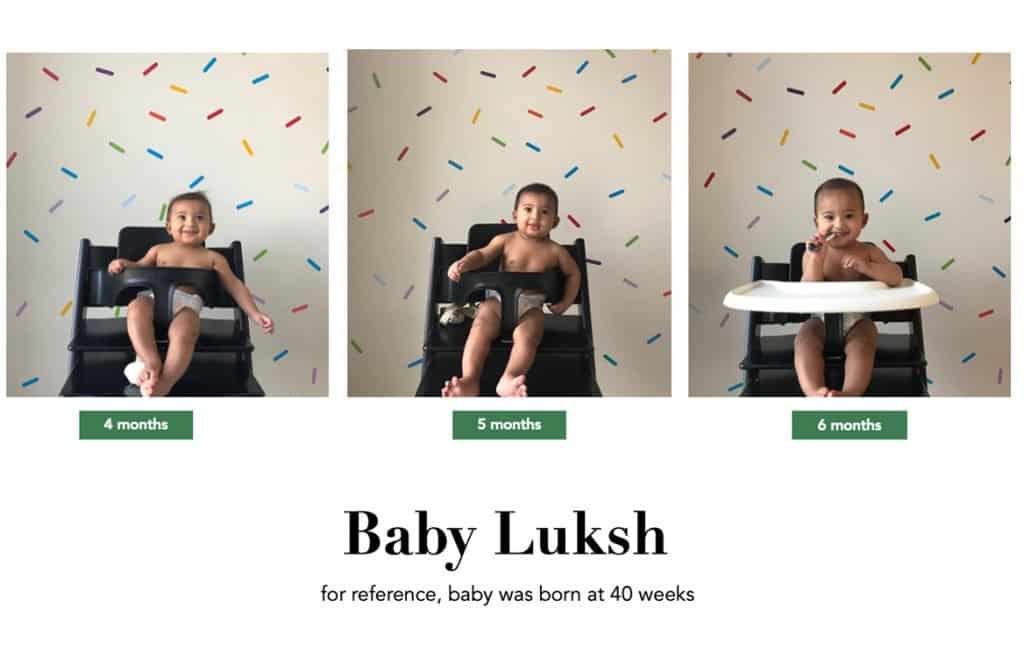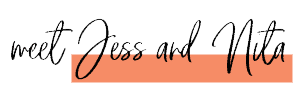I, Nita, remember it really well. Both instances, both babies at four months. The pediatrician gave the green light to go ahead and start them on solid food. I recall the conversation going something like this, “baby is four months, now you can start solids.”
Seriously. That’s all?
No questions to check if my baby was developmentally ready?
While every pediatrician may have a preference for when they’d like their patients to start on solid food, I think there can be harm in offering blanket recommendations, especially when most babies are not ready to start solid food at four months.
When Do the Health Organizations Recommend Starting Solids?
To add, a quick google search will leave you feeling pretty confused. Here’s what we found:
The World Health Organizations states: introduction of nutritionally-adequate and safe complementary (solid) foods at 6 months together with continued breastfeeding up to 2 years of age or beyond.
Health Canada states: At 6 months, breastfeeding is still your baby’s main food source, butit is time to begin adding solid foods. Formula-fed infants should also be introduced to solid foods at this time.
Dietitians of Canada states: You can introduce solids at around six months.
The Canadian Pediatric Society states: At about 6 months, most babies are ready for solid foods.
So what’s the right answer? 4 months or 6 months? Why isn’t anyone recommending 5 months???
Admittedly, at Happy Healthy Eaters we agree that exclusive breastfeeding and/or formula feeding for until your baby is around six months of age is appropriate. And, we also believe that some babies may benefit from the introduction of solid food at a slightly earlier age. For example: babies that are high risk of a food allergy may benefit from early exposure under supervision from a physician.
What we don’t agree with is the notion that all babies can start at 4 months. Most babies just aren’t ready. For perspective, a 6 month old baby is 1.5x older than a 4 month old baby assuming the same gestational age. That’s wild!
Just look at this cute patootie below (that’s my baby, Luksh). He looks pretty darn cute at four months but his posture isn’t great and at that time he couldn’t turn his head from side to side. In comparison, at six months he is able to sit upright and is positioned much better in the high chair.

When I reflect back on my decision-making process, here’s what went through my Dietitian-Mom brain:
- My baby had good head control but was only starting to move his neck from side to side
- My baby could not sit up without a lot of support (both of my boys couldn’t sit up independently until closer to 7 months)
- When seated in his highchair, he didn’t have the upper body support to stay seated upright
- He had a strong extrusion reflex that diminished after six months
- Breastfeeding was finally going well, I didn’t want early introduction of solid food to displace this after all of the fourth trimester struggles
- My heart longed to offer my baby solid food in a hand-held fashion; I learned so much about baby led weaning and I knew it was a no-go before six months of age
- My baby was not at a high risk of food allergies
Wow. That’s a lot of thinking, right?
In the end, just before my baby turned six months I started to introduce key allergens like nuts, peanut, and egg in puree form. And then we jumped right into the glory and fun of purees and handheld foods. Instinctively, I knew in my heart of hearts that they weren’t ready at four months. I also know that if they were ready, I would have jumped in happily because that’s what parents do, they do the best they know for their baby. And this was my best.
More than sharing our unique experiences, we also want to share our knowledge with you. We’ve skimmed through the research and created a beautiful course (in our humble opinion) to have you feeling SO confident about starting solids with your baby.
Each baby’s story and situation are unique. Each set of parents is unique. We don’t believe that a one-size-fits-all recommendation really cuts it. Our course is all about helping you navigate the signs your baby is giving you to figure out when, what, and how to feed him!
As always, if you’ve got questions, comments or want to connect, feel free to reach out.






